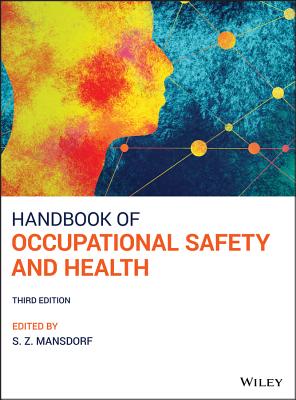Managing Safety: A Guide for Executives
暫譯: 安全管理:高層主管指南
Kishor Bhagwati
- 出版商: Wiley
- 出版日期: 2006-11-10
- 售價: $4,520
- 貴賓價: 9.5 折 $4,294
- 語言: 英文
- 頁數: 235
- 裝訂: Hardcover
- ISBN: 3527315837
- ISBN-13: 9783527315833
海外代購書籍(需單獨結帳)
商品描述
Description
What are accidents? Are they just statistics that your safety department sends to you monthly and which you glance over and ask yourself whether the safety professional you have employed is doing his job right?Aimed primarily at top and middle management, this book adopts the new approach to preventing serious incidents rather than minimal compliance with regulations. It takes you step-by-simple-step to show how accidents can be avoided with little effort and money, allowing you to reap the rewards such an injury-free culture brings: higher worker morale, better product quality, and maximum productivity. Plus the inner satisfaction of reaching a goal that is worth striving for, namely zero accidents.
Table of Contents
Preface.1. Introduction.
2. Consequences of Accidents.
1. The victim himself.
2. His family.
3. His colleagues.
4. His superiors.
5. The worker morale.
6. The company.
3. A Small Experiment.
Step 1.
Step 2.
Step 3.
Results.
4. Man or Machine?
Bhopal, India.
Chernobyl.
“The Herald of Free Enterprise”.
5. Why Do Accidents Happen?
6. The Underlying Reasons.
7. How to Make People not Take Risks.
8. The Myths of Management.
9. Who “Makes” Safety?
W.hat is the Safety Professional responsible for?
1. Improving the attitude of workers towards safety.
2. Keeping the managers’ heads free of all safety matters.
3. Discovering the need for safety training programmes of individuals.
4. Organising site-wide safety seminars on selected topics.
5. Writing the Company Safety Policy.
6. Checking for compliance with Site Safety Policy.
7. Bearing responsibility for site safety performance.
8. Investigating all accidents at site and writing investigation reports.
9. Coordinating safety activities of the site.
10. Chairing the Central Safety Committee.
11. Participating in and coordinating outside safety audits.
12. Being the information source for safety-related legislation and appliances.
13. Being the advisor to management on safety issues.
Conclusion.
10. Management Tools.
11. Pillar 1: Total Management Commitment.
1. Interest.
2. Involvement.
3. Investment.
12. Pillar 2: Safety Visits – The Basics.
13. Safety Visits – The System.
14. Safety Visits – The Procedure.
1. Follow all safety rules.
2. Build a Safety-visit Team.
3. Entering the area to be visited.
4. Approaching a worker.
5. The talking sequence.
6. Noting down.
7. Thanking the worker.
8. Report writing.
15. The Art of Talking.
16. Pillar 3: Involving the Worker.
17. Brainstorming.
1. Criticism.
2. Free-wheeling.
3. Quantity.
4. Refining the information.
18. Pillar 4: Accident Investigation.
19. The Methodology of an Accident Investigation.
1. When to start investigating?
2. The investigation team.
3. The investigating team leader.
4. No culprit is to be sought.
5. The investigation report.
20. The Art of Questioning.
21. Accident or Incident?
22. Responsibility & Authority.
23. The Safety Committees.
24. Lock Out – Tag Out.
25. Communications.
26. Other Managerial Tools.
The Permit-to-Work System.
Operating Procedures.
Contractors.
Rewards and Incentives.
27. How to Proceed.
To Do List for the Top Management.
To Do List for the Middle Management in Production.
To Do List for Nonproduction Management (HR, IT, Finance, etc.).
Appendix 1: Understanding the Numbers in Safety Statistics.
Appendix 2: Job Description of a Safety Professional.
Appendix 3: Safety Visit Reports.
Appendix 4: Accident Investigation Reports.
Appendix 5: About audit and audits.
Appendix 6: Safety Visit Control Sheet.
Index.
商品描述(中文翻譯)
**描述**
事故是什麼?它們只是您安全部門每月發送給您的統計數據,您隨便瀏覽一下,並問自己您雇用的安全專業人員是否在正確地履行他的職責?
本書主要針對高層和中層管理人員,採用新的方法來預防嚴重事故,而不是僅僅遵守法規的最低要求。它一步一步地向您展示如何以較少的努力和金錢避免事故,讓您獲得無事故文化所帶來的獎勵:更高的員工士氣、更好的產品質量和最大的生產力。此外,還有達成值得追求的目標——零事故所帶來的內心滿足感。
**目錄**
**前言**
**1. 介紹**
**2. 事故的後果**
1. 受害者本人
2. 他的家人
3. 他的同事
4. 他的上級
5. 員工士氣
6. 公司
**3. 一個小實驗**
步驟 1
步驟 2
步驟 3
結果
**4. 人還是機器?**
印度博帕爾
切爾諾貝爾
“自由企業的先驅”
**5. 為什麼會發生事故?**
**6. 潛在原因**
**7. 如何讓人們不冒險**
**8. 管理的神話**
**9. 誰“創造”安全?**
安全專業人員負責什麼?
1. 改善工人對安全的態度
2. 讓管理者不必關心所有安全事務
3. 發現個人安全培訓計劃的需求
4. 組織全場安全研討會,針對特定主題
5. 撰寫公司安全政策
6. 檢查是否遵守現場安全政策
7. 承擔現場安全績效的責任
8. 調查現場所有事故並撰寫調查報告
9. 協調現場的安全活動
10. 主持中央安全委員會
11. 參與並協調外部安全審核
12. 成為安全相關法規和設備的信息來源
13. 成為管理層在安全問題上的顧問
結論
**10. 管理工具**
**11. 支柱 1:全面的管理承諾**
1. 興趣
2. 參與
3. 投資
**12. 支柱 2:安全訪問 - 基礎**
**13. 安全訪問 - 系統**
**14. 安全訪問 - 程序**
1. 遵循所有安全規則
2. 建立安全訪問小組
3. 進入要訪問的區域
4. 接近工人
5. 談話順序
6. 記錄
7. 感謝工人
8. 撰寫報告
**15. 談話的藝術**
**16. 支柱 3:讓工人參與**
**17. 腦力激盪**
1. 批評
2. 自由發揮
3. 數量
4. 精煉信息
**18. 支柱 4:事故調查**
**19. 事故調查的方法論**
1. 何時開始調查?
2. 調查小組
3. 調查小組組長
4. 不尋找罪魁禍首
5. 調查報告
**20. 提問的藝術**
**21. 事故還是事件?**
**22. 責任與權限**
**23. 安全委員會**
**24. 鎖定 - 標籤**
**25. 溝通**
**26. 其他管理工具**
工作許可制度
操作程序
承包商
獎勵與激勵
**27. 如何進行**
高層管理的待辦事項清單
生產中層管理的待辦事項清單
非生產管理(人力資源、IT、財務等)的待辦事項清單
**附錄 1:理解安全統計中的數字**
**附錄 2:安全專業人員的工作描述**
**附錄 3:安全訪問報告**
**附錄 4:事故調查報告**
**附錄 5:關於審核和審計**
**附錄 6:安全訪問控制表**
**索引**













